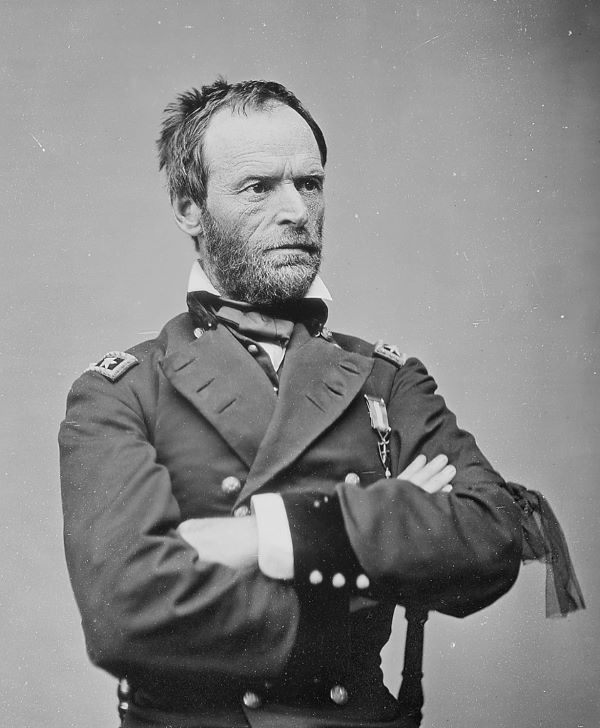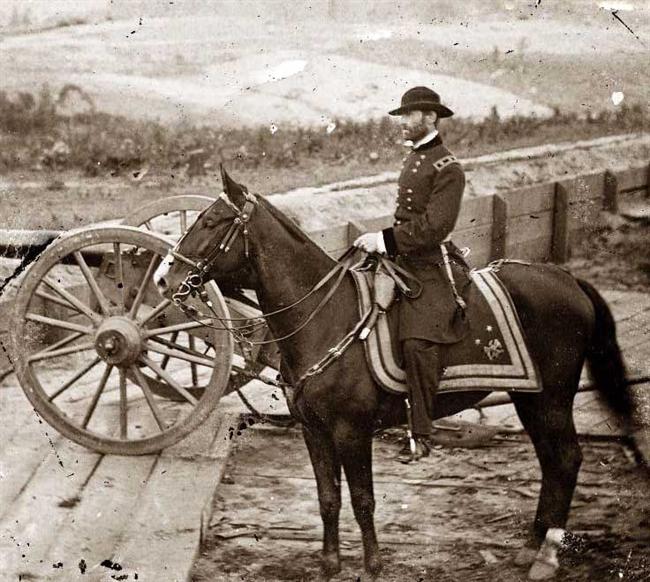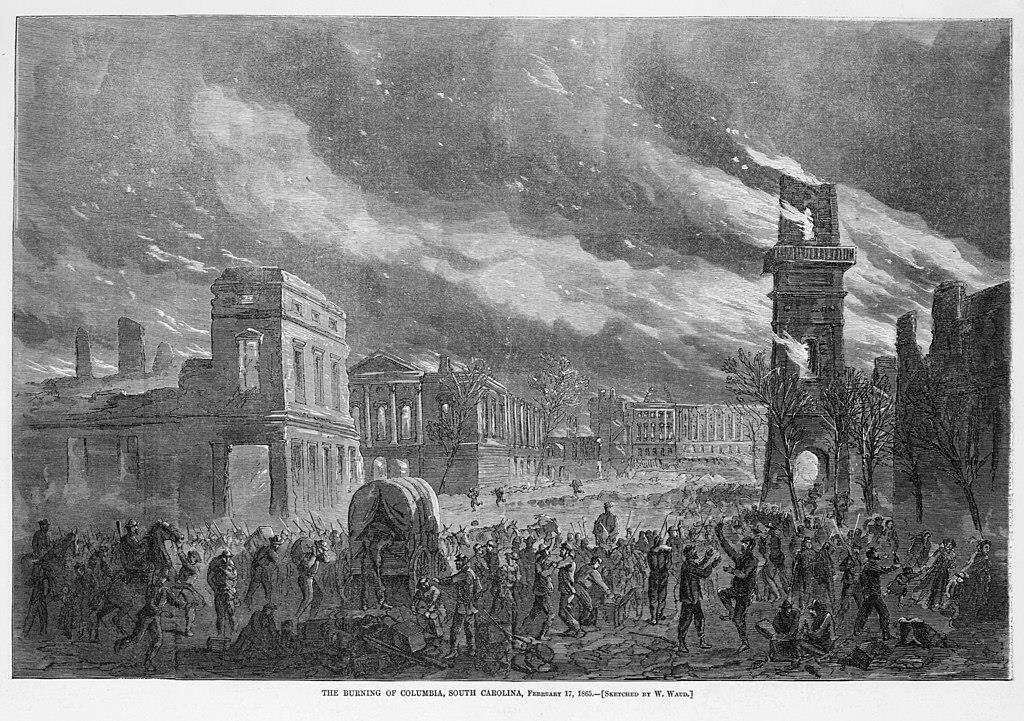William T. Sherman’s implementation of total war over 150 years ago during the late stages of the American Civil War remains a subject of intense debate among historians. His 1864-1865 campaigns, aimed at crippling the Confederacy’s will to fight, challenge our understanding of military ethics and strategy. This blog delves into the controversial legacy of Sherman’s approach, examining its historical impact and the moral questions it continues to raise.
Who Was William T. Sherman?
General William T. Sherman, a central figure in the American Civil War, is remembered not just for his military strategies but also for the complexity of his character and the lasting impact he had on the conduct of warfare. Sherman, whose military career before the Civil War was unremarkable, rose to prominence with his decisive and often ruthless tactics. His approach to warfare was not just about winning battles, but also about breaking the will and capacity of the Confederacy to continue the war.

Sherman’s belief in hard war, exemplified in his famous “March to the Sea,” was a reflection of his understanding of the total nature of conflict. He recognized that the war would not be won solely on the battlefield but also through undermining the economic and psychological pillars of the Confederate states. This led him to adopt a strategy of widespread destruction, targeting not just military objectives but also infrastructure and civilian property, to hasten the South’s surrender.
However, Sherman was not merely a symbol of ruthless military tactics. His actions following the end of hostilities revealed a different aspect of his character. When offering surrender terms to Confederate General Joseph E. Johnston, Sherman displayed a surprising magnanimity. His terms were initially so generous that they were rejected by the Union leadership. This duality of being harsh in war but lenient in peace paints a picture of a man who was as complex as the era he helped shape. Sherman’s legacy, therefore, is a blend of military genius and a deep understanding of the human cost of war, making him a figure of continued interest and study in the annals of military history.
Sherman’s Total War: The March Through Georgia and South Carolina
General William T. Sherman’s march through Georgia to Savannah, and his subsequent campaign through South Carolina, epitomized the concept of total war. This campaign began with Sherman’s departure from Atlanta, a daring move initiated after receiving approval from General Ulysses S. Grant. On November 15, 1864, Sherman, leading a force of 62,000 men, embarked on a risky venture through hostile Confederate territory. The audacity of this campaign lay in its departure from traditional military tactics; Sherman divided his force into two wings, constantly altering their directions, thereby cloaking his ultimate objective in secrecy.
Sherman’s march was marked by a calculated strategy of widespread destruction, as outlined in his Special Field Orders No. 119 and 120. These orders directed the systematic demolition of mills, houses, and any civil infrastructure that could potentially aid the Confederate war effort. His troops dismantled railroad tracks over vast distances, rendering them unusable by the Confederacy. This practice of bending railroad rails around trees, leaving them twisted and unusable, became infamously known as “Sherman’s neckties.”

The impact of Sherman’s campaign was profound, extending beyond the immediate military objectives. It brought unprecedented suffering to the civilian population, a deliberate tactic to break the morale and resistance of the Confederacy. The destruction of property and infrastructure, the disruption of the South’s economy, and the psychological impact on both soldiers and civilians were unprecedented in the American Civil War.
Sherman’s approach in these campaigns demonstrated a clear shift towards total war – a war not just against enemy armies, but against all elements of an adversary’s capacity to wage war, including its civilian resources and morale. This strategy, while effective in hastening the end of the Civil War, set a precedent for the level of destruction and civilian hardship that could be deemed acceptable in modern warfare. Sherman’s actions in Georgia and South Carolina thus remain a subject of intense debate and study, exemplifying the moral complexities inherent in the concept of total war.
Through the Eyes of Emma LeConte: Witnessing Sherman’s March
In the waning days of 1864, as General Sherman’s campaign carved its path through the South, the city of Columbia, South Carolina, braced for the impending storm. Emma LeConte, a resident of Columbia, chronicled these tumultuous times with poignant clarity in her memoirs. Her words paint a vivid picture of the fear and uncertainty that gripped the civilian population.

LeConte’s narrative begins with a reflection on the deteriorating quality of life, marked by a stark decline in clothing quality—a tangible sign of the broader economic struggles wrought by the war. “The last day of the year… doubly so today. Dark leaden clouds cover the sky,” she wrote, capturing the gloomy foreboding that filled the air. This somber mood was mirrored in the truncated annual bazaar at the state house, a moment of fleeting elegance and normalcy, swiftly overshadowed by Sherman’s advancing forces.
As Sherman’s army drew closer, LeConte’s descriptions became increasingly visceral. “I am constantly thinking of the time when Columbia will be given up to the enemy. The horrible picture is constantly before my mind,” she confesses, illustrating the depth of her fear and the grim anticipation of the city’s fall. This fear was not unfounded, as Sherman had explicitly threatened to lay waste to South Carolina, leaving a trail of destruction in his wake.
The climax of LeConte’s account occurs with the arrival of Union troops in Columbia. “How long before our beautiful little city may be sacked and laid in ashes? Dear Columbia, with its lovely trees and gardens. It is heart-sickening to think of it,” she laments. Her words provide a civilian perspective on the military occupation, colored by a deep sense of loss and violation.
In conclusion, Emma LeConte’s memoirs offer a profound and personal glimpse into the civilian experience during Sherman’s march. Her detailed narrative and emotional responses encapsulate the turmoil, fear, and resilience of those caught in the whirlwind of one of the Civil War’s most notorious campaigns. Her account stands as a testament to the enduring human spirit in the face of overwhelming adversity.
Historical Challenge: Can You Conquer the Past?
Answer more than 18 questions correctly, and you will win a copy of History Chronicles Magazine Vol 1! Take our interactive history quiz now and put your knowledge to the test!

